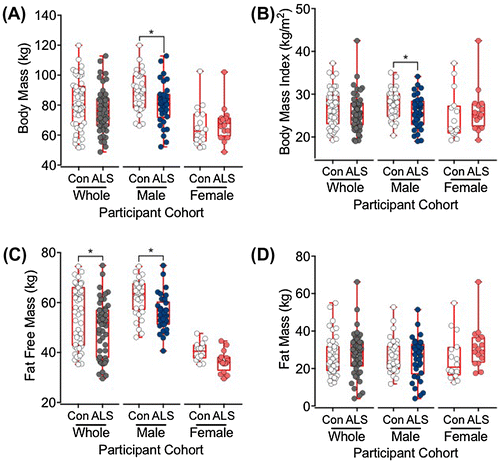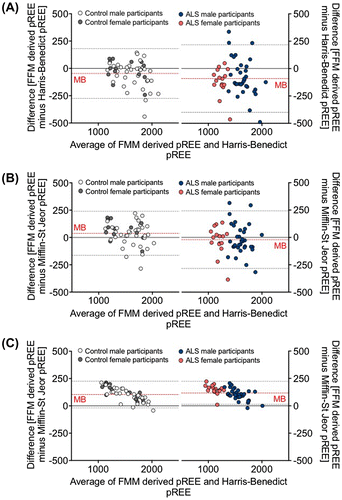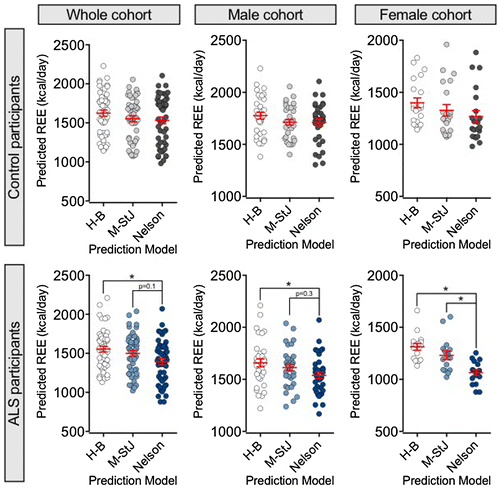Figures & data
Table 1. Comparison of key factors considered when predicting resting energy expenditure (pREE) using the Harris Benedict, Mifflin-St Jeor and Nelson prediction models, and models that correct for fat free mass (FFM)
Table 2. Demographics, anthropometric, body composition and predicted resting energy expenditure for control and ALS participants
Figure 1. Box and whisker plots showing the distributions of body mass (A), body mass index (BMI; B), fat free mass (C), and fat mass (D) in control (Con) and amyotrophic lateral sclerosis (ALS) participants. The box represents the lower, median and upper quartiles, and the whiskers illustrate the lowest to the highest observation.

Figure 2. Bland-Altman plots illustrating the bias between predicted resting energy expenditure (pREE) outcomes using the Harris-Benedict (A), Mifflin-St Jeor (B), and Nelson (C) prediction models, and predictions of REE following correction for fat free mass (FFM). Plots demonstrate the mean bias (MB, broken red line) of prediction models and estimated 95% agreement intervals (broken grey lines) between prediction models.

Figure 3. Scatter plots illustrating differences in predicted resting energy expenditure (pREE) outcomes when using the Harris-Benedict, Mifflin-St Jeor and Nelson prediction models in control (top panels) and ALS (bottom panels) participants.

Figure 4. Bland-Altman plots illustrating the bias between predicted resting energy expenditure (pREE) outcomes using the Harris-Benedict and Mifflin-St Jeor (A), Nelson and Harris-Benedict (B), and Nelson and Mifflin-St Jeor prediction models (C). Plots demonstrate the mean bias (MB, broken red line) of prediction models and estimated 95% agreement intervals (broken grey lines) between prediction models.

